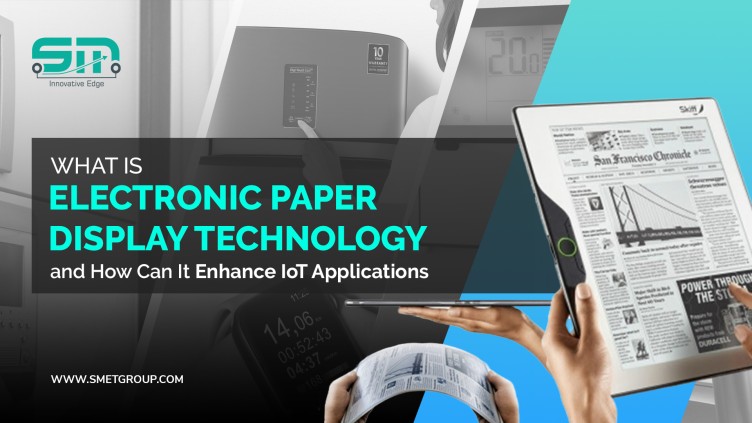Electronic Paper Display (EPD) technology uses tiny microcapsules filled with charged particles that move when an electrical charge is applied. These microcapsules are suspended in a liquid and sandwiched between two layers of transparent electrodes. When a voltage is applied to the electrodes, the particles move to the top or bottom of the capsule, making the area appear either black or white. This creates a visual image on the screen.
EPDs (Electronic Paper Displays) can increase IoT applications by providing a low-power, high-contrast display option that is well-suited for a variety of IoT use cases. Here are a few ways EPDs can increase the functionality of these applications:
1. Energy Efficiency:
EPDs consume very little power compared to traditional LCDs (Liquid Crystal Displays), which makes them ideal for those applications that run on battery power. This means that the devices can have an always-on display without significantly reducing battery life.
2. Outdoor Readability:
These displays are designed to reflect ambient light, making it easy to read in bright sunlight. This makes it perfect for outdoors, such as electronic signage or outdoor environmental sensors.
3. Low Latency and High Refresh Rates:
Electronic Paper Displays can update quickly and have low latency, which makes them ideal for applications that require real-time data visualization, such as environmental monitoring or dashboard displays. For example, an EPD display can be used in a smart home device that shows real-time energy usage data to users.
4. Thin and Lightweight:
These are thin and lightweight, which is ideal for IoT devices that need to be portable or have limited space. For example, an EPD display can be used in a wearable device that displays notifications to users, such as a smartwatch or fitness tracker.
5. Easy to Integrate:
This technology can be easily integrated with other IoT devices and sensors, which makes them a versatile and powerful tool for building solutions. For example, an EPD display can be used in the device that tracks inventory levels and displays the information to users, such as an electronic shelf label.
EPDs offer several advantages, including energy efficiency, outdoor readability, low latency, Wide viewing angles, Low eye strain, high refresh rates, and ease of integration. This is an excellent option for devices that require a low-power, high-contrast display. This is an excellent choice for devices that require low power consumption, outdoor readability, and high contrast ratios. While LCDs have their advantages, such as faster refresh rates and full-color support.
These are particularly useful e-readers and other portable devices that require long battery life and good readability in bright light.

